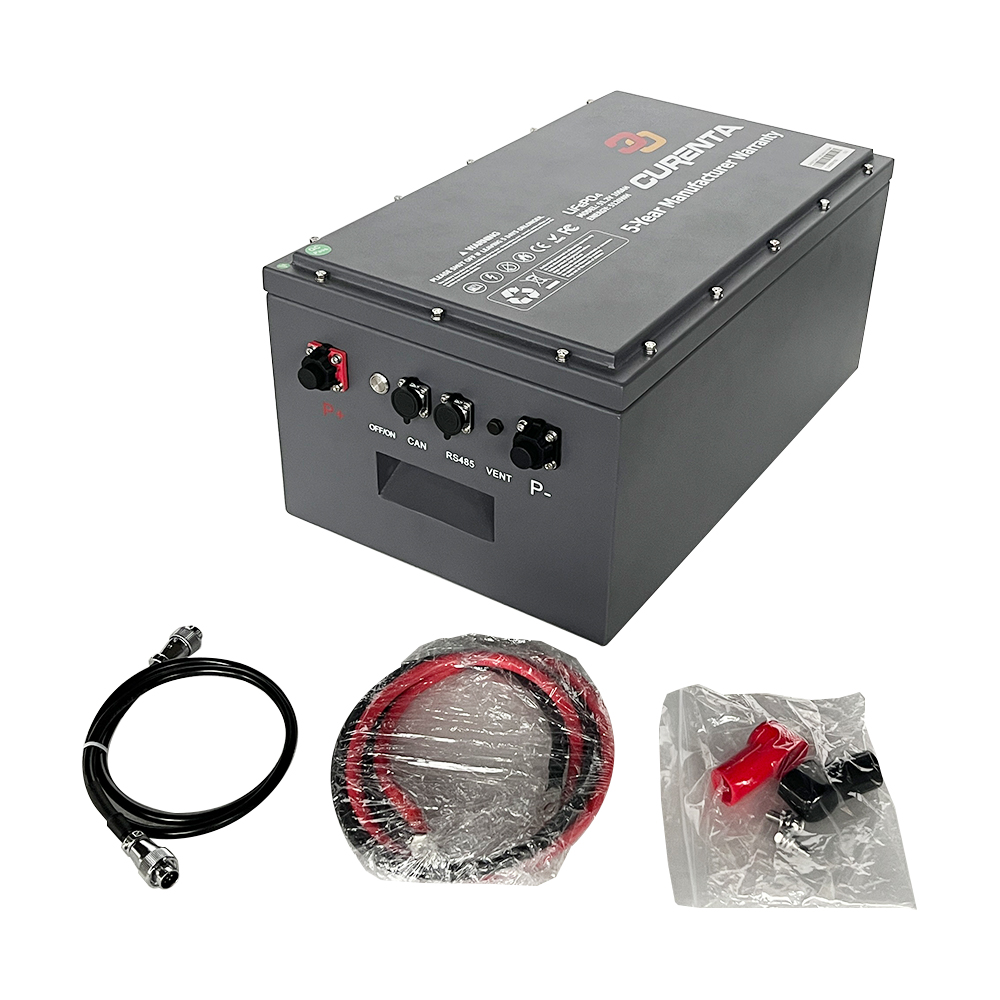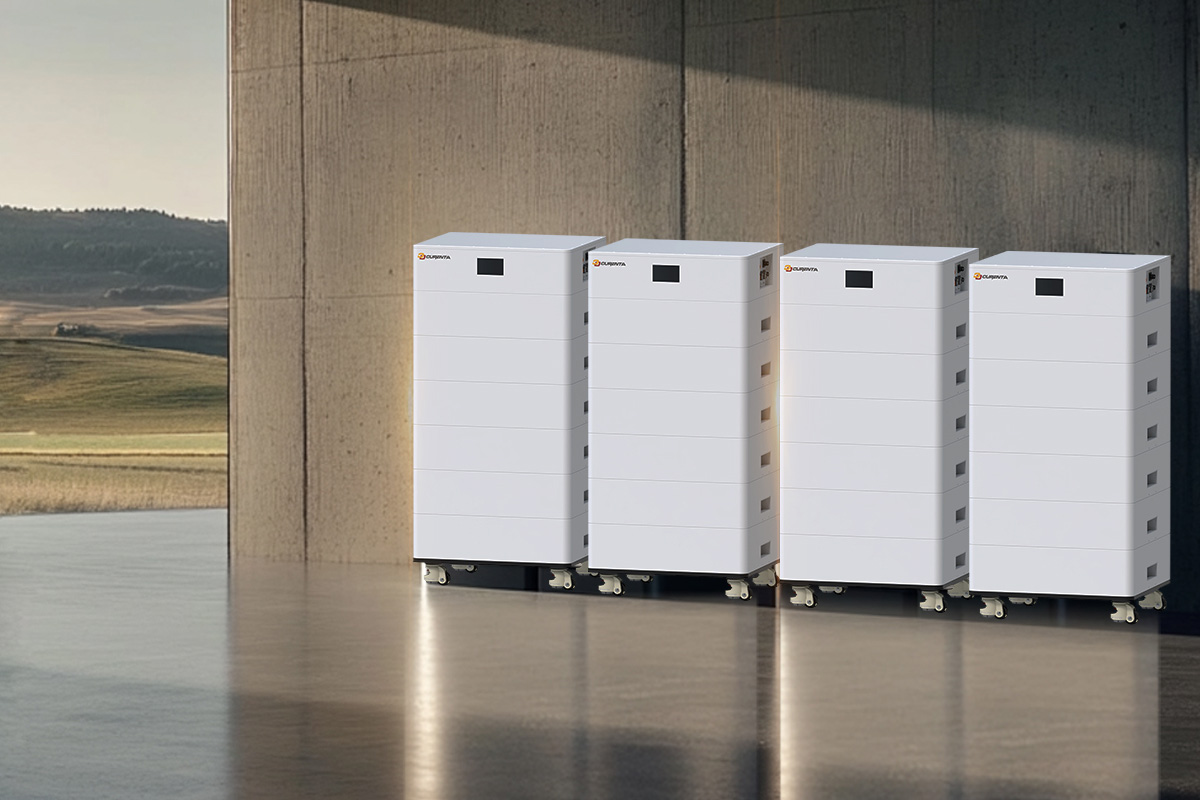Learn More >
Choosing the Best Batteries for Golf Cart Applications: Why LiFePO₄ (LFP) Is the Ideal Chemistry
Introduction
Golf carts have come a long way since their first appearance on fairways. What started as simple lead-acid battery–powered utility vehicles is increasingly turning into a showcase for more advanced, modern, and efficient energy-storage technologies. Among the available options, lithium iron phosphate (LiFePO₄, or LFP) batteries are rapidly emerging as the most suitable choice for golf carts — and for good reason.
If you’re evaluating lithium-ion battery chemistries for your golf cart, it's important to balance cost, lifespan, safety, and performance. In this article, we’ll explore why LFP batteries stand out as the best option for golf cart use and how they compare to other lithium chemistries such as NMC (nickel manganese cobalt) and LMO (lithium manganese oxide).
Understanding Battery Chemistry Basics
Before diving into the specifics, it helps to understand what makes batteries different:
Cathode Material: This is a key distinguishing factor in lithium-ion batteries. For LFP, the cathode is made of iron phosphate; for NMC, it's a mix of nickel, manganese, and cobalt.
Energy Density: How much energy the battery can store per unit of weight or volume.
Cycle Life: How many full charge-discharge cycles the battery can endure before its capacity significantly degrades.
Safety: Risk of overheating, thermal runaway, or fire.
Depth of Discharge (DoD): How deeply a battery can be discharged relative to its full capacity – deeper discharges can give more usable energy, but may affect lifespan.
Cost Over Time: Upfront cost is important, but total cost of ownership (TCO) accounts for replacements, maintenance, and efficiency.
With those in mind, let’s examine why LiFePO₄ batteries are especially suited for golf cart applications.
Why LiFePO₄ (LFP) Is the Best Chemistry for Golf Carts
1. Unrivaled Safety
Safety is arguably the paramount consideration in battery-operated vehicles, especially for something as common as a golf cart. LFP chemistry is exceptionally stable:
LFP cells have very high thermal stability and are much less prone to thermal runaway compared to other lithium-ion chemistries.
The iron-phosphate chemistry reduces the risk of fire, even under stress or damage.
LFP packs typically include Battery Management Systems (BMS) that monitor cell voltage, temperature, and overall health to further ensure safety.
In practical terms, this means LFP-powered golf carts are safer to operate, safer to charge, and less likely to experience destructive failure.
2. Long Lifespan and High Cycle Life
One of the strongest arguments for LFP batteries in golf carts is their endurance:
LFP batteries can typically achieve 2,000–6,000 cycles at around 80% depth-of-discharge (DoD).
Many golf cart LFP packs can last 8–12 years, depending on usage patterns.
Even under regular usage, LFP batteries retain 80% or more of their capacity after thousands of cycles.
By contrast, traditional lead-acid batteries often manage only 300–500 cycles when discharged to 50% DoD.
This longevity means fewer battery replacements, less downtime, and a much lower long-term cost, especially for fleet operations or frequent users.
3. Long-Term Cost-Effectiveness
Although LFP batteries may cost more upfront than lead-acid batteries, their extended life and minimal maintenance make them a smart investment:
LFP batteries require no water refilling, do not leak acid, and do not need terminal cleaning.
They provide consistent power delivery, reducing energy wasted and improving efficiency.
Fewer replacements and low maintenance lower the cost-per-cycle.
The upfront premium on LFP is often recouped within a few years due to low maintenance and fewer replacements.
4. Weight Reduction and Performance
Switching to LFP significantly reduces weight, which improves performance and handling:
LFP packs can be 50–70% lighter than comparable lead-acid systems.
The lighter weight improves acceleration, payload capacity, and maneuverability — all desirable traits for golf carts.
Less mass also reduces wear on tires, suspension, and steering components, extending vehicle longevity and lowering maintenance costs.
5. Fast and Efficient Charging
LFP batteries charge more efficiently than older chemistries, helping reduce downtime:
They can accept higher charge current, enabling faster recharging (full charge in 2–4 hours in many cases).
High charge efficiency means very little energy is lost during charging.
Better efficiency translates into less wasted electricity and potentially lower energy costs for frequent users or fleets.
6. Operational Stability Across Temperatures
Golf carts are often used outdoors, where environmental conditions vary. LFP batteries excel in these contexts:
LFP chemistry supports a wide operating temperature range, maintaining performance in both hot and cold conditions.
Their thermal stability helps them handle temperature stress without degradation or safety risks.
Properly designed battery systems with BMS allow safe charging even in less-than-ideal environmental conditions.
For storage, LFP batteries can retain their charge well for months without significant loss.
Comparing LFP to Other Lithium Chemistries
To fully appreciate why LFP is superior for golf carts, it's helpful to compare it to other common lithium chemistries: NMC and LMO (and hybrids).
LFP vs. NMC
Energy Density: NMC batteries have higher energy density, but golf carts rarely need extreme energy density, making LFP’s trade-off acceptable.
Cycle Life & Degradation: LFP lasts 2–4 times longer than NMC when used in frequent cycling.
Safety: LFP is more thermally stable and less prone to fire than NMC.
Cost and Materials: LFP is cheaper to produce and lasts longer, lowering total cost per cycle.
LFP vs. LMO and Hybrid Chemistries
LMO (Lithium Manganese Oxide): Offers high power but shorter cycle life and lower thermal stability than LFP.
Hybrid Chemistries (e.g., NMC/LMO): Try to balance energy density and power but often compromise cycle life, safety, or cost.
For golf carts, LFP’s simplicity, durability, and safety make it the preferred industrial chemistry.
Practical Considerations for Golf Cart Owners
1. Matching Voltage and Capacity
Ensure the replacement pack matches the voltage of your existing system (36V, 48V, 72V).
Choose an appropriate Ah rating based on usage: higher Ah gives longer range but costs more and may add weight.
Confirm the pack has a good BMS for longevity and safety.
2. Using the Right Charger
Use a lithium-compatible charger, not a lead-acid charger. Lead-acid chargers can damage LiFePO₄ packs.
Verify fast charge capabilities match your cart’s needs.
3. Charging Behavior
LFP tolerates deep discharge (up to 80% DoD), but avoid 0% if possible.
Periodic full charge cycles may help maintain balance across cells.
4. Temperature Management
Store your cart in cool, dry areas to extend battery life.
Extreme climates may require insulated enclosures or pre-warming solutions.
5. Maintenance
One of LFP’s biggest advantages is zero maintenance: no watering, no acid, no corrosion cleaning.
Periodic inspections of terminals and enclosures are still recommended.
6. Storage Tips
For extended storage, keep the battery partially charged (around 40–60%) to minimize stress.
LFP packs can retain charge over weeks to months.
7. Total Cost of Ownership
Consider TCO over the battery’s life rather than just the purchase price.
Include labor, downtime, and replacement cycles in calculations.
Real-World Performance
Many LFP golf cart batteries demonstrate:
Thousands of cycles with minimal capacity loss.
Fast charging capabilities and reliable BMS monitoring.
Lifespans of 8–12 years under regular usage.
These attributes align with the theoretical advantages of LFP chemistry: safety, longevity, and efficiency.
Addressing Common Concerns
Upfront Cost: While higher than lead-acid, savings on maintenance and replacements offset this over time.
Lower Energy Density: Acceptable for golf carts, which do not require ultra-long ranges.
Cold Climates: Modern LFP packs and BMS systems mitigate performance drops in extreme cold.
Lead-Acid Replacement: Voltage matching and a lithium-compatible charger are required; mechanical fit and BMS compatibility must also be considered.
Future Outlook
Golf cart manufacturers are increasingly offering LFP systems as they become mainstream.
Economies of scale may reduce prices further.
Advances in BMS, thermal management, and design continue to improve power density and charging speed.
Environmentally, LFP is favorable due to abundant, non-toxic materials (iron, phosphate) compared to cobalt and nickel.
Conclusion
For golf cart applications, LiFePO₄ (LFP) battery chemistry offers the optimal combination of safety, longevity, performance, and cost-effectiveness. While other lithium chemistries like NMC may offer higher energy density, they fall short in cycle life, thermal stability, and total cost of ownership.
Summary Table:
| Key Factor | Why LFP Excels |
|---|---|
| Safety | High thermal stability, low risk of fire, stable chemistry. |
| Lifespan | Thousands of cycles; 8–12+ years of life. |
| Cost‑Effectiveness | Low maintenance, fewer replacements, low cost per cycle. |
| Weight & Performance | Lightweight, improves acceleration and handling. |
| Charging Efficiency | High efficiency and fast charging. |
| Operational Range | Good performance across a wide temperature range. |
If you are upgrading or building a golf cart, LFP should be the top choice — it delivers real-world value ride after ride, year after year.

 English
English German
German Czech
Czech French
French Italian
Italian Hungarian
Hungarian Russian
Russian Japanese
Japanese Korean
Korean Arabic
Arabic Spanish
Spanish Portuguese
Portuguese Danish
Danish


 WhatsApp
WhatsApp